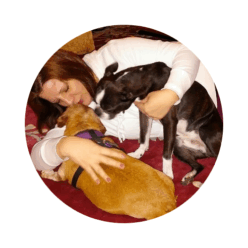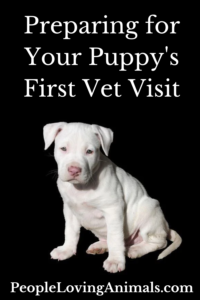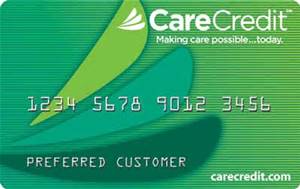Ideally, your puppy’s first vet visit should take place within the first few days after bringing your puppy home. Once you’ve got them settled (refer to this article, Preparing for a New Puppy), get them acquainted with your family, get them squared away at home as far as food, water and food bowls, toys, a doggy bed to sleep in.
It’s OK to take a few days to get all that accomplished. But your puppy’s first vet visit should take place within the first week at most.
This post contains affiliate links. If you make a purchase, I’ll earn a commission (at no extra cost to you). As an Amazon Associate, I earn from qualifying purchases. I donate 10% of my profits to animal charities.
Puppy’s First Vet Visit
In this post, we’ll cover:
-
- The Cost of Your Puppy’s First Vet Visit
- Preparing for Your Puppy’s First Vet Visit
- Tips for Making Your Puppy’s First Vet Visit Easier
- What to Expect at Your Puppy’s First Vet Visit
- Questions to Ask the Vet
- Help Paying for Your Puppy’s Vet Bills
Watch My Video: Your Puppy’s First Vet Appointment
The Cost of a Puppy’s First Vet Visit
According to GreatPetCare.com, your puppy’s first vet visit will likely cost somewhere between $100 and $200. Of course, costs can vary depending on where you live, costs of vaccinations, etc.
Each visit for vaccine booster shots will likely be around $75 to $150. The vet will also discuss flea, tick and heartworm prevention.
We’ll talk about how to get help paying for vet bills later in this post.
Preparing for Your Puppy’s First Vet Appointment
Bring Previous Medical Records. First, gather any previous records you may have relating to your puppy’s medical history to take with you to the appointment.
If, for example, you adopted your puppy from a local SPCA or shelter, they probably gave you paperwork regarding any shots the puppy may have received, the age and date of birth of the puppy, and breed information.
Get a Doggy Car Seat. I strongly recommend purchasing some sort of car seat for your dog before you try to take him anywhere. I had this one for my miniature dachshund, Taz.
She liked it because she could sit high enough to see out the windows while we’re traveling. Larger dogs can benefit from an auto harness (like a seat belt).
Never allow your dog to roam around the car freely while you’re driving. It can cause an accident!
I once had a mini doxy, who had been comfortably relaxing on the back seat just a few seconds earlier, crawl under the driver’s seat and insert herself directly under my gas and brake pedals!
I almost cracked up the car! And they can be distracting too. It’s just dangerous – get them belted in just like a kid! 🙂
Watch this absolutely adorable video for help teaching your puppy how to ride nicely in the car.
Tips for Making the Visit to the Vet Easier
By the time you get to the vet’s office, you might already be a little bit frazzled because you’ve just traveled by car with a puppy who was probably less than well behaved on the way!
And your puppy (and you!) might be a little nervous.
Sometimes the waiting room can be a little crazy, if it’s a busy day and the room is filled with several nervous pets and their owners. Here are some tips to make things run as smoothly as possible:
Arrive on time. If everyone arrives at their appointments on time, it will make the day’s schedule run much more smoothly for the doctors and staff, eliminating unnecessary wait time for everyone.
Make sure your puppy is on a leash. (I actually recommend a harness instead of a leash. They are less of a choking hazard, make training the dog much easier, and prevent collapsed trachea issues later in life).
Don’t allow your puppy to approach other pets. Even though your puppy might be excited to make new friends, the other pets in the room may not feel the same way. Senior dogs, for example, often have no use for puppies and may snap.
Cats – well, do I even have to say it? – will scratch your puppy’s face and draw blood if they don’t want to be approached!
Not to mention the other animals may be there because they are ill, making it unpleasant to socialize, and also dangerous if the animal has something that is contagious.
Also, some owners have trouble controlling their pet in the waiting room at the vet’s office. These owners won’t appreciate having to deal with your puppy’s advances as well. This rule applies to children also.
Don’t allow your kids to approach pets in the waiting room without first asking permission from the owner.
Let your puppy pee before entering the building. The staff at vet’s office are most certainly ready, willing, capable, and used to cleaning up pet messes! But preventing it makes it easier for everybody.
Also, your puppy will be a little more comfortable during the wait if he doesn’t have to go potty.
Don’t hesitate to say something if someone is bothering you or your puppy. If other pets or children are invading your space, feel free to say something. You might say something like, “He’s a little nervous. I think it would be best if we let him be.”
If your puppy is particularly frightened or ill, ask the receptionist if you can wait in an available exam room instead of in the waiting room.
What to Expect at Your Puppy’s First Vet Visit
Your veterinarian will perform a physical exam on your puppy which will include looking into your puppy’s eyes and ears, and looking into his mouth to check his teeth.
He will listen to your puppy’s heart, and feel around on his belly and abdomen. Your puppy’s weight will also be taken and noted.
Questions You Might Like to Ask Your Vet
While your vet is performing the physical examination, feel free to ask questions. Here are some suggestions:
How much does my puppy weigh? How much food should I be feeding him each day?
Do you see any problems or issues with my puppy’s health?
What should I be doing as far as grooming? How often should I bathe my puppy? How often should I clean his ears? Can I clip his nails at home? How do I do that, and how often?
Ask your vet about inserting a microchip – a tiny device injected under the puppy’s skin to help locate him if he should ever get lost. These last for life.
Puppy Deworming
Your vet will likely deworm your puppy at his first visit to prevent intestinal parasites like roundworms, hookworms and whipworms.
This is important, as this can be a major health risk to puppies and some parasites can be transmitted to other animals and humans!
Puppy Vaccinations
Dogs are most susceptible to infectious, deadly diseases during the first 3 to 9 months. Depending on your puppy’s age, he may have already gotten his first few shots already.
Make sure you show your vet any shot records you’ve been given by the puppy’s previous owner or shelter.
Vaccinations are usually recommended for all puppies. These vaccines help to prevent infectious or even deadly diseases including hepatitis, distemper, parinfluenza, parvovirus, bordetella, lyme disease, coronavirus, giardia, and prophyromonas.
Your veterinarian will be able to determine which vaccinations your puppy should receive.
You May Be Given Homework!
Your vet would likely agree that you should establish healthy habits right from the start regarding your puppy’s health.
Dental Care. Providing proper dental care for your puppy, for example, is something you should start when they are young so they won’t be afraid of getting their teeth brushed. My elderly doxy would not allow me to brush her teeth.
I wish whoever owned her as a puppy would’ve started and maintained this practice – if they had, perhaps it could’ve prevented the THREE dental surgeries this poor little dog had later in life. She’s had to have so many teeth pulled due to decay, that she only had 12 teeth left. 🙁
Nail Clipping. Puppies’ nails grow fast. If nails aren’t trimmed on a regular basis (or of they don’t wear down naturally), they can cause pain, cut into the pads of their paws, or even break off. I suggest watching this video, How to Trim Your Pet’s Nails.
Learning to do this yourself at home will save you a lot of trips to the vet for nail clippings, and save you a ton of money as well! And just like with the dental care, it’s best to start early so they get used to having it done. You can also refer to my article, How to Trim a Dog’s Nails at Home for more help.
Help Paying for Your Puppy’s Vet Bills
First, read this article, Help with Vet Bills. I strongly recommend doing two things as soon as you get your puppy:
Get Pet Insurance: If you get pet insurance right from the beginning, you will save thousands over your pet’s lifetime on vet bills.
If you wait until the dog is diagnosed with an expensive disease, you may not be able to get pet insurance because it will be considered a “pre-existing illness.”
Getting insurance for a puppy is inexpensive, and will pay off bigtime later in life when the dog’s medical expenses start adding up. My recommendation for an inexpensive policy is Lemonade Pet Insurance.
For more information, read my article, Is Pet Insurance Worth it For Dogs?
Get Care Credit: Signing up for CareCredit helps a lot too, because this is a credit card that is accepted by many veterinarians and there are little or no interest charges for a long time if you use it to pay vet bills.
Prevention is Key for Puppy Health
Taking our puppy to the vet regularly is the best way to 1) learn how to properly care for him and 2) prevent serious illnesses in the future. I hope this article has helped. Please comment below if you have any questions or would like to give more ideas and suggestions! Enjoy your new puppy!
More Help with Caring for a Puppy
- Preparing for a Puppy: What to Do Before Bringing Your Puppy Home
- How to Get Ready for a New Puppy: Checklist
- Establishing a Routine for Your Puppy: Consistency Is Key
- Why Do Puppies Sleep So Much?
- Bringing Your New Puppy Home: Preparing Your Family
- First-Time Vet Visit for Your Puppy: How to Prepare and What to Expect
I Donate to Animal Charities
Thank you for visiting my website. I’m so happy you’ve adopted a new puppy and I hope the two of you live happily ever after!
I donate 10% of my profits to animal charities. You can see a list of the charities I donate to here.
If you found my site to be helpful, please share it with your friends and family. Thank you! Debra














I had heard of pet insurance, how expensive does a typical policy cost per month? I see people with multiple dogs all over their car while driving. You have a great point – it can be dangerous, I’m sure it is pretty distracting. And it would keep your pet safe in the occurrence of a car accident. What a neat idea.
Policies start for as little as $10 per month. And I know with PetPlan, you get 10% off for every additional pet!